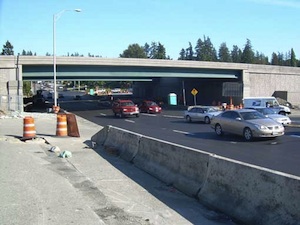I’ve answered a lot of mail on the budget so far. Some items come up over and over again – Adult family homes, family planning funding, Children’s Hospital, and the State Auditor and his I-900 audits. Here are some notes on these things.
Family Planning
There has been about $10 million in the state budget for family planning services. Since the state pays for 57% of all births in the state, increases in the ability of couples to plan for when they will have a child can save us a lot of money – this is a reasonable investment, and with a short return timeframe (9 months.) The $10 million has been in the budget to backfill a federal cut during the Bush administration. We’re expecting the feds to restore this cut in the 2011 budget. Our money is in the first year of the biennium, with the expectation that we’ll come back next year and put the money back in if the feds don’t come through.
Children’s Hospital
The original budgets had a provision that had a disproportionate effect on Children’s Hospital and the Seattle Cancer Care Alliance (theOutpatient Prospective Payment System.) These facilities interact differently with Medicaid than “regular” hospitals do, and one of the cuts seemed to have an overly large cuts to children’s and SCCA. We’re still working on fixing this. Something was done to help Children’s in a different way which somewhat mitigates the problem, but that is not to say that the budget doesn’t affect Children’s and SCCA – we make devastating cuts to our healthcare safety net in order to deal with the most dramatic economic downturn since the great depression.
Adult Family Homes (AFHs)
AFHs are part of the network of businesses that provide long-term care for our seniors and those who are disabled enough to not be able to care for themselves. Our support ranges from paying for individual providers of home care services, adult family homes, nursing homes, skilled nursing facilities, etc. We have a Medicaid responsibility to provide this care in nursing homes, which are very expensive. Most folks would prefer to have care at home, in a small facility, or somewhere in their community rather than go to a nursing home, so we apply for several federal waivers to allow us to provide care that’s lower cost and more popular with the recipient. We provide about half of the money and the federal government provides half.
We try our best to be balanced and cut all of these providers about 5% in their reimbursement rate. The federal stimulus plan provided some additional short-term funds which we apply to this part of the system. Before we used this money it was 14%.
I-900 Audits
The auditor started up his performance audit program after the passage of I-900, an initiative I supported. It took some time for him to expand the program to the level provided for in the initiative, a reasonable measured approach. He didn’t use all the money the initiative provided in the early years of this program, and we use some of that to rebalance the current budget shortfall. We fund his entire current workplan, but are trying to share the overall budget cuts fairly across the entire government operation.



